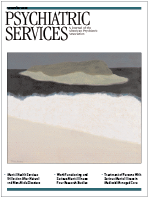Hatred: The Psychological Descent Into Violence
This slim volume is an elegant two-part essay about that most powerful of human emotions—hatred. Willard Gaylin, M.D., takes the reader on a nuanced extended tour of a feeling that seems omnipresent in today's world. The first section of the book focuses on the individual and distinguishes among core emotions—hatred, rage, anger, envy, guilt, humiliation, and shame. Gaylin emphasizes that the distinction between anger—which he treats as identical to rage—and hatred is particularly important.
As is the case in Gaylin's other writing about human emotions, his sources are rich and variegated, ranging from contemporary psychoanalysts to classical philosophers. For example, he cites Aristotle in distinguishing anger from hatred: "Whereas anger arises from offenses against oneself, enmity may arise even without that; we may hate people merely because of what we take to be their character …. Moreover, anger can be cured by time, but hatred cannot…. And anger is accompanied by pain, hatred is not." This definition leads to an extended exploration of prejudice and bigotry.
Gaylin easily moves back and forth between the psychic worlds of his patients and that of notorious public figures, such as Ted Kaczynski, the Unabomber. He well delineates the psychic torment of the psychotic individual who seeks an external target on which to displace his inner turmoil, projecting the enemy within.
In the second section, the book moves from individual hatred to collective hatred. The extended quotation on the book's cover promises an unflinching focus on man's inhumanity to man: "I have heard many say, in defense of Palestinian hatred, that after generations of being kept in squalid refugee camps, becoming increasingly aware of a different and superior standard of living available to others, feeling frustrated and humiliated by the exercise of Israeli power, Palestinians are 'entitled' to their hatred. This is one of the sad misunderstandings of the nature of hatred. Hatred is not an entitlement like health care. It is a disease like tuberculosis. It may infect others, but it inevitably destroys the hater, diminishing his humanity and perverting the purpose and promise of life itself. No one is entitled to hatred any more than he is entitled to cancer."
Unfortunately, the eloquence of this characterization is not fully met in this section of the book. The author's previously clear voice falters here, although the compass under his lens does not, appropriately including the Holocaust, Palestinian terrorism, the ethnic conflict between the Hutus and the Tutsis in Rwanda, and the terrorist attacks of September 11, 2001. The author well characterizes the lengths to which ordinary people can go in committing extraordinary evil but insufficiently explains mass violence.
What is it that shapes an inchoate mass of frustrated alienated individuals into a coherent movement, focusing their implacable hatred on a defined enemy to the point where they will give their lives for the movement's cause? The answer is, I submit, leadership—a concept not pursued in this otherwise excellent volume. The author addresses the mass violence of September 11 perpetrated by al Qaeda without mentioning Osama bin Laden, other than in passing. But bin Laden can be seen as a "sense-making" destructive charismatic leader who took the unfocused humiliation, shame, and frustration of his followers; provided an external explanation and cause, namely the United States; and focused these feelings into a consuming hatred (1). In so doing, he established a movement in which al Qaeda recruits subordinate their individual identity into the collective identity of dedicated members of a radical movement. If bin Laden decrees that giving their lives advances that cause, they will gladly do so. One can no more address al Qaeda and its excesses of hatred without considering the focusing role of bin Laden than one can analyze the extremity of the Holocaust without considering the demonic focus of Adolph Hitler. Bin Laden, like Hitler, in the words of Eric Hoffer (2), "manipulated the slime of discontented selves."
This issue of collective hatred and collective violence is the central dilemma of this age of terrorism. Gaylin's Hatred: The Psychological Decent into Violence makes an important contribution to understanding this phenomenon but insufficiently addresses how ordinary men can be led to perpetrate extraordinary evil.
Dr. Post is professor of psychiatry, political psychology, and international affairs at The George Washington University in Washington, D.C. He is coauthor of Political Paranoia: The Psychopolitics of Hatred. His most recent book is Leaders and Their Followers in a Dangerous World: The Psychology of Political Behavior.
1. Post J: Killing in the name of God: Osama bin Laden and radical Islam, in Know Thy Enemy: Profiles of Adversary Leaders and Their Strategic Cultures. Edited by Schneider B, Post J. Maxwell Air Force Base, Ala, USAF Counterproliferation Center, 2003Google Scholar
2. Hoffer E: The True Believer (reprint of 1951 edition). New York, Harper and Row, 1966Google Scholar



